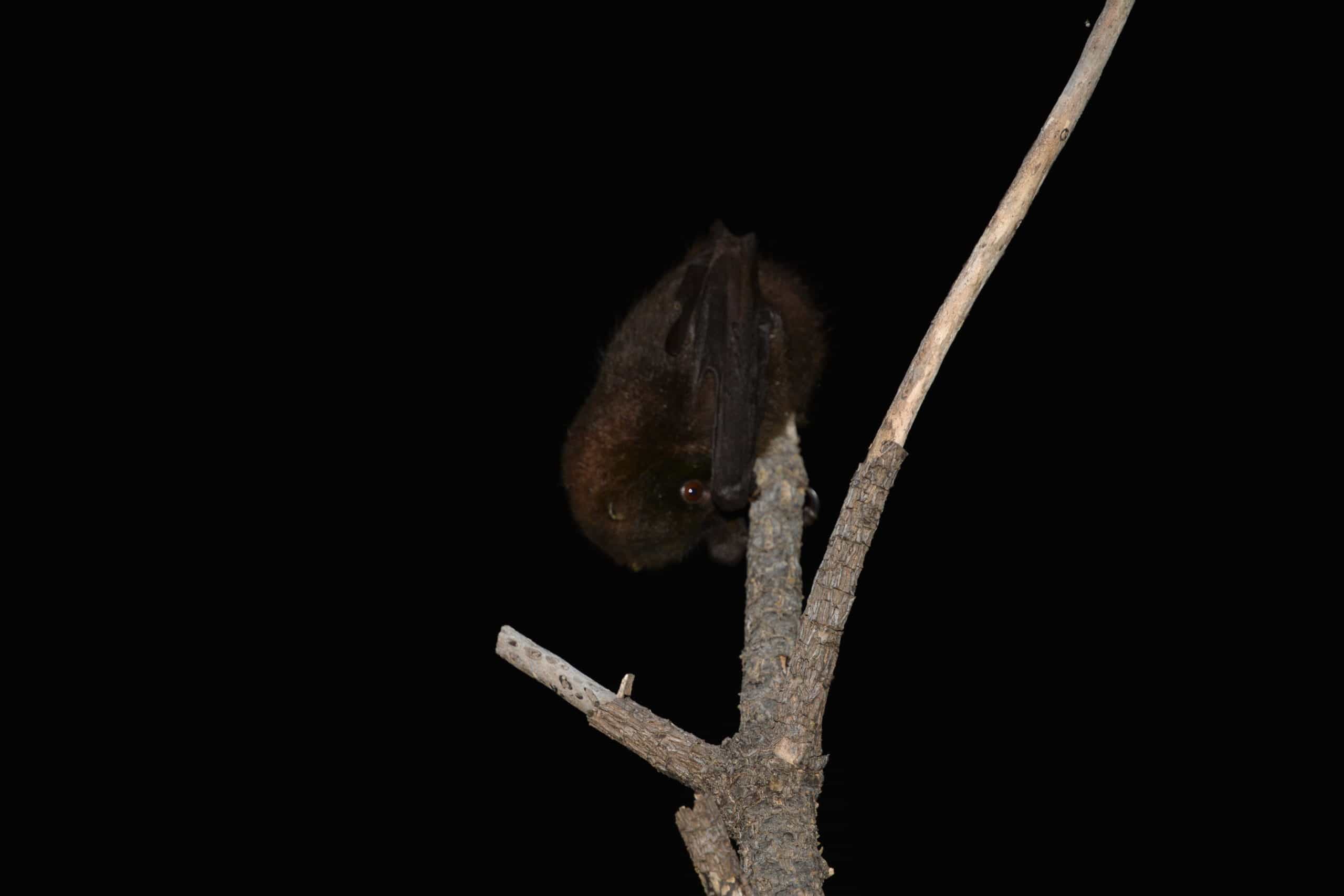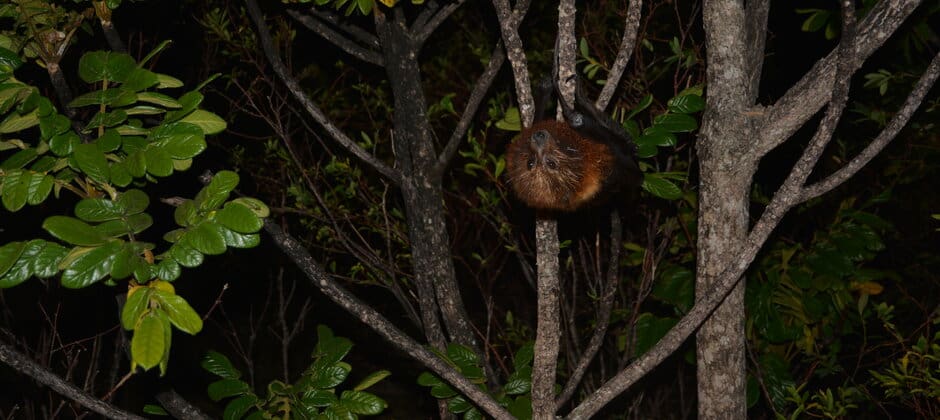Share this article
Cats prey on bats around the world
Malik Oedin and his colleagues first started to notice unexpected remains of flying foxes turning up in the scat of feral cats in New Caledonia, a French territory in the South Pacific east of Australia. The felines didn’t appear to be picky about what kind of bats they ate either — the researchers found remains of all three large bat species: Pacific flying fox (Pteropus tonganus), New Caledonia flying foxes (Pteropus vetulus), ornate flying foxes (Pteropus ornatus) as well as four species of fruit bats found on the island.
During Oedin’s PhD studies at the New Caledonian Agronomic Institute, he also compared his results with others found on Christmas Island, where other researchers discovered through scat analysis that feral cats (Felis catus) were consuming species like the Christmas Island flying fox (Pteropus melanotus natalis).
“A lot of people don’t think that cats can predate and eat large bats,” he said.
Researchers already knew that cats prey on smaller bats in some parts of the world. But based on personal observations, Oedin suspected cat predation might be a far bigger threat to the flying mammals than previously believed.
“We think that cats are probably a main threat for a lot of species of bats,” he said.
With his colleagues, Oedin decided to conduct a survey of the literature that included studies of domestic, free-roaming, stray and feral cats preying on bats around the world. They combined these findings with information from the International Union for Conservation of Nature, which listed threats to different bat species.
In a paper published recently in Mammal Review, the researchers found that bat predation is understudied in much of the world. But their review of 44 different studies found evidence that cats prey on at least 86 species of bats. About a quarter of the bat species affected by cats are listed as vulnerable, endangered or critically endangered by the IUCN.
The researchers caution that there are few studies available on this topic. Given that there are 1,400 known bat species, bats found to be preyed on by cats only represent about 6% of total species. But much of that is due to a lack of examination.

A New Caledonia flying fox. Credit: Malik Oedin (IAC)
Due to the small sample size, it’s also difficult to determine whether some groups of bats are more susceptible to cat predation, Oedin said. But these 86 species include bats from all major types and from all terrestrial habits — including flying foxes, fruit bats or insectivores — and span 20 countries and all continents where bats are found. They include bats from all major land habitat types.
Some bats are at higher risk for cat predation based on the foraging strategies they choose, they found. For example, some fruit bats may be more vulnerable than others if they forage for fruit that has dropped, or sits close to the ground, where they are more vulnerable to pouncing cats.
Where bats call home also influences their vulnerability. Oedin also said that bats in cities are likely more vulnerable to cat predation than bats in the wild as more domestic cats are found in the city.
Research Oedin has been involved with on flying foxes in the archipelago of New Caledonia suggests that cats may be preying on flying foxes there more often due to a relative lack of other prey like birds, lizards or other small mammals on the small islands.
On mainland Australia, where there are more prey options, some research has shown that flying foxes don’t end up in cats’ stomachs nearly as often.
The review also found mismatches between study findings and predation threats listed on the IUCN’s Red List species — a group of organisms the organizations has deemed as species of conservation concern.
“Numerous species have published papers, which clearly explain an impact of cats on bats, but they are not yet mentioned in the IUCN database,” Oedin said, adding that some bat species listed in the Red List name cats as threats, though they could find no related paper already available listing the cats as an issue for that species.
Oedin said part of the goal in this work is to call attention to a potentially underappreciated threat in order to improve bat conservation.
“This review is also a call to researchers to study more this impact of cats on bats, and also to managers to take this impact into account in their management strategy.”
Header Image: An ornate flying fox in New Caledonia. Credit: Malik Oedin (IAC)








